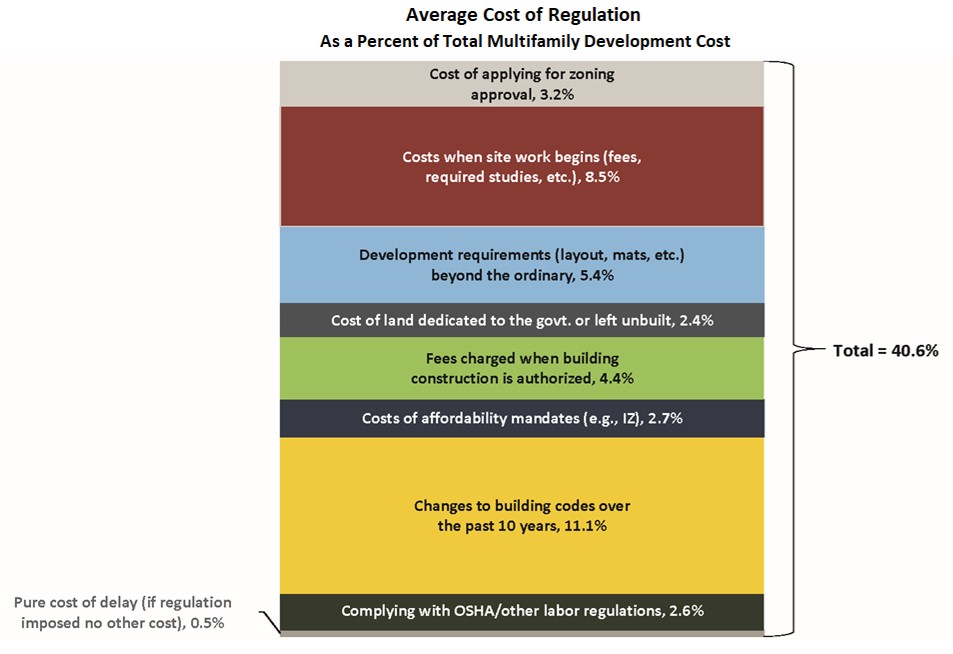Recently, the National Association of Home Builders (NAHB) and the National Multifamily Housing Council (NMHC) undertook a joint research effort to find out how much government regulation adds to the cost of building new multifamily housing via a survey distributed to multifamily developers. The research finds that an average of 40.6 percent of total development costs can now be attributed to complying with regulations imposed by all levels of government.
Among the categories of regulation captured by the survey, the highest average cost is the result of changes to building codes over the past 10 years (11.1 percent of total development costs). The second highest are the costs imposed when site work begins (8.5 percent). The average cost of affordability mandates like inclusionary zoning (which typically requires developers to rent some of the apartments they build at below the market rate) is 2.7 percent.

However, affordability mandates are less common than some other types of regulation. Only 38.8 percent of the multifamily developers surveyed indicated that the typical project they build experienced added costs due to affordability mandates, so the 2.7 percent average includes a large number of developers with zero costs due to affordability mandates. Among the 38.8 percent who do experience this type of cost, that cost was 6.9 percent of their total development costs, forcing them to raise rents on their market-rate apartments by 7.6 percent.
Moreover, some types of regulatory mandates can discourage developers from building in the very marketplaces that have the greatest need for more housing. For example, 47.9 percent of multifamily developers said they avoid building in jurisdictions with policies such as inclusionary zoning, and a full 87.5 percent avoid building in a jurisdiction with rent control in place.

Regulations cover a wide-range of issues, and while they may be well-intentioned, the costs and burdens of any regulation must be carefully weighed against the benefits. Few would argue, for example, that basic safety standards for structures and workers are unnecessary. But, when regulation constitutes an average of 40.6 percent of a project’s development costs, this raises questions about how thoroughly governments are considering the consequences of their actions.
For more detail, including a complete description of the methodology and a copy of the survey questionnaire, please consult the full study.
Related


